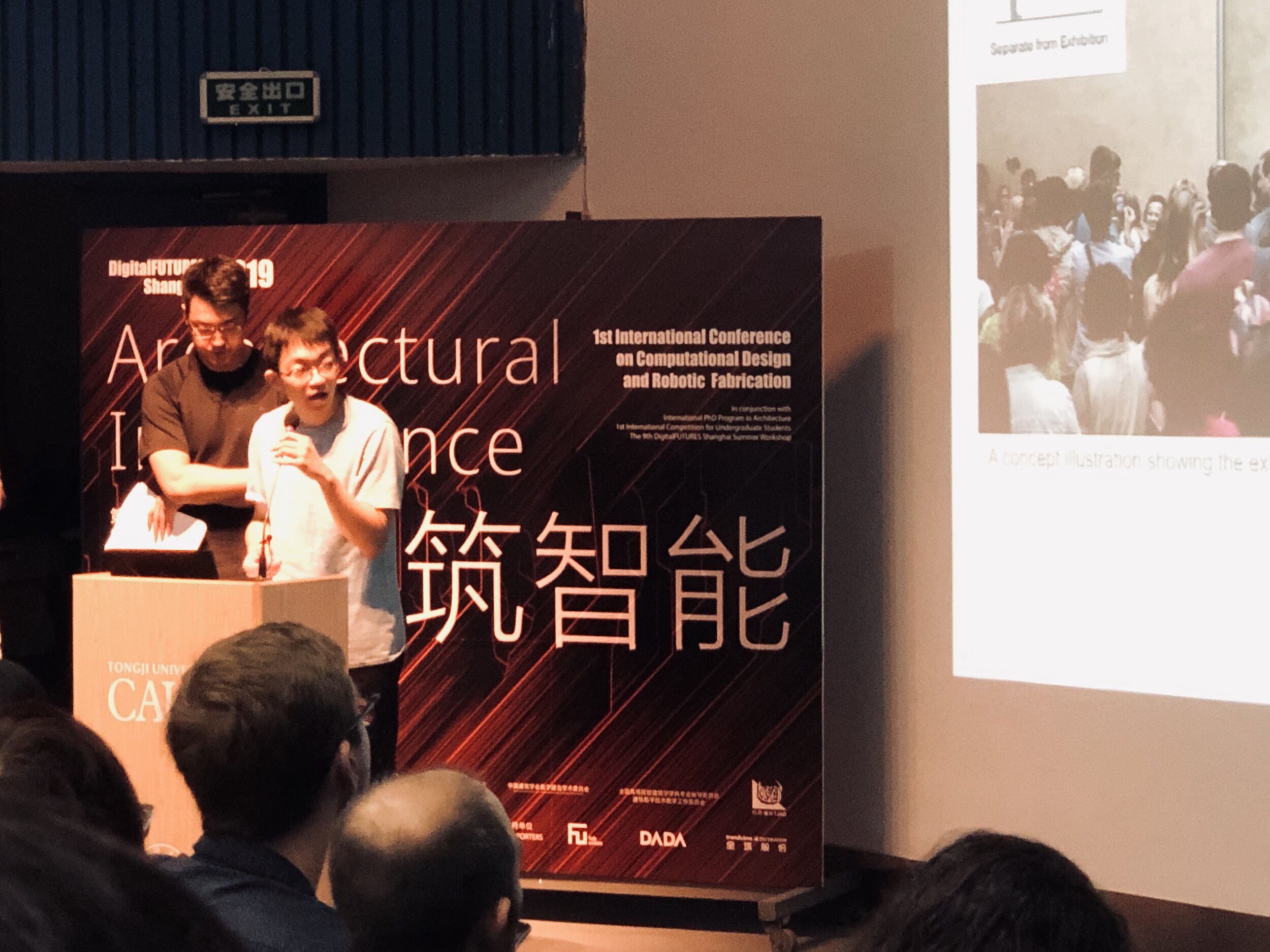Designing an Architectural Robot: An Actuated Active Transforming Structure Using Face Detection
Ji Shi, Yujie Wang, and Shang Liu.
In Proceedings of the 1st International Conference on Computational Design and Robotic Fabrication (CDRF 2019), 287-302. Springer, Singapore. DOI: 10.1007/978-981-13-8153-9_26
— Best Conference Paper Award
selected for presentation at Robotic Intelligence session
— Included in book Architectural Intelligence
Keywords
Architectural Robot, Human-Computer Interaction, McKibben Pneumatic Artificial Muscle, Face Detection, Design and Cultures
Abstract
Although the advances of autonomous control in robotics broke new ground in the realization of architecture, they have hardly been integrated with architectural design intention. Very few examples of architecture-specific robot exist. This results from multiple realistic factors including the scalability and cost. However, the fundamental incentive lies in the stereotypical design ideology that fails to develop new spatial agendas to stimulate the integration. This paper presents a design workflow that revolves around designing an architectural robot. An operational full-scale architectural robot of an actuated active transforming structure was prototyped and tested to demonstrate the workflow. The design is based on a prototyping model with pneumatic actuation system and sensing using computer vision. The structure interacts with human by detecting face features and actively transforming its gesture to prevent human from approaching. The communication is based on a simulation-model-free host program that constantly reads sensor feedbacks and sends actuation values.
Stereotypical design workflow (top) vs. Proposed autonomous-agenda-centric design workflow (bottom).
Best Conference Paper Award at CDRF 2019 Conference, selected for presentation at Robotic Intelligence section
















